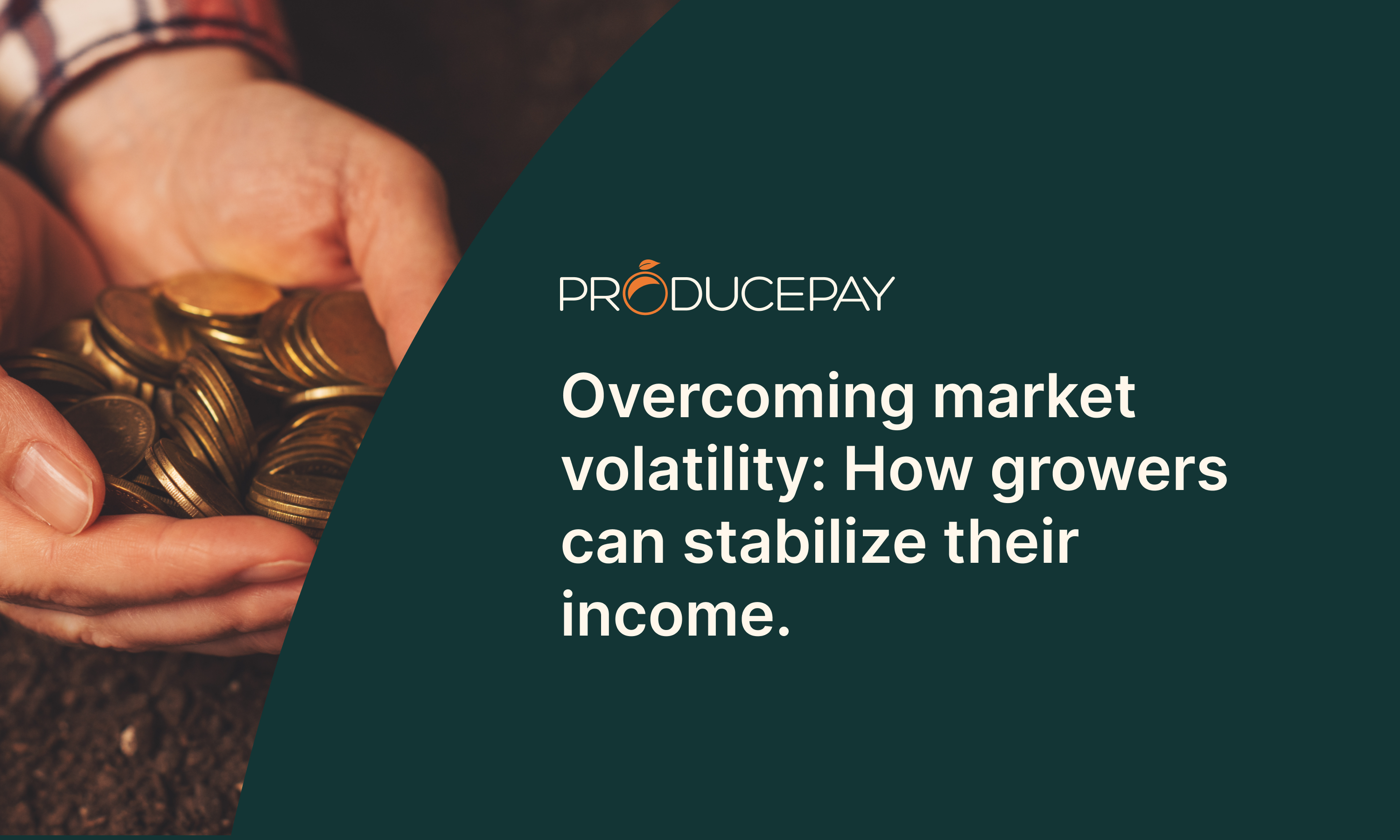
Overcoming market volatility: How growers can stabilize their income
In recent decades, market volatility has become a growing concern in the agricultural industry, impacting growers in numerous ways. Key factors contributing to this instability include unpredictable weather events, price fluctuations, inconsistent demand, high rejection rates from buyers, and inefficiencies in the supply chain.
In addition, macroeconomic factors such as exchange rate fluctuations, rising input costs, and market speculation further threaten the financial stability and income of growers. This is why it is crucial to adopt strategies that help mitigate these risks and ensure more predictable income, leveraging specialized financial practices and tools.
Strategies to promote predictability amid market volatility
To navigate these challenges, growers need strategies to stabilize their income and minimize the risks associated with market volatility. Here are some effective strategies:
1. Diversification of crops and markets
Diversification is one of the most effective strategies for managing market volatility. By not relying on a single commodity or market, growers can significantly reduce the risks of price and demand fluctuations.
Whether due to an inability to meet product demand in volume or specifications, low prices in a specific market, or buyers unable to absorb more products, the lack of market options often leads to waste. Prolonged storage reduces quality, leading to sales at much lower prices and resulting in significant economic losses. Therefore, maintaining a diversified portfolio of buyers throughout each season is crucial for greater financial stability.
2. Enhanced yield and produce quality
Improving yield and produce quality boosts market competitiveness and buyer confidence. This can be achieved through advanced agricultural practices and innovative technologies, such as using genetically enhanced crop varieties for higher yields or resistance to drought and diseases, implementing more efficient irrigation systems, and precision farming to optimize input and energy use.
These improvements can lead to more consistent and higher-quality production, strengthening the market offering and allowing growers to secure better and more stable selling prices. It is important to consider the return on investment from these practices and technologies, ensuring economic benefits in the medium to long term while avoiding cash flow issues.
3. Guaranteed volume and price contracts
Establishing contracts with guaranteed volumes and prices before the harvest is a powerful tool to reduce market uncertainty. These contracts provide farmers with more predictable cash flow, regardless of market fluctuations. By securing a fixed price, producers can protect themselves against sudden price drops and plan their operations with greater confidence.
While these options may come with higher costs, they represent a valuable investment to mitigate the risks associated with price fluctuations. Moreover, including clauses that guarantee the purchase of specific volumes helps reduce the risk of oversupply and related losses.
4. Solid finances and use of specialized tools
In addition to the above strategies, a solid financial structure is crucial for managing the risks posed by market volatility. Producers should maintain organized finances to avoid cash flow problems throughout the season. Utilizing financial tools specifically tailored for the agricultural sector is highly recommended, with the most essential being:
- Agricultural financing: Specialized loans and credits provide growers the capital needed to cover costs during planting, growth, and harvest, including inputs, technological investments, infrastructure improvements, and payrolls. Leveraging these tools helps achieve the desired yields and qualities and meet buyer demand.
Learn how to find stability with bundled agricultural financing.
- Subsidies and government support: Government programs often offer funds and resources that can ease financial burdens and provide stability during market fluctuations, enabling investment in sustainable practices and technology.
- Agricultural insurance: This provides protection against losses from unforeseen events like natural disasters, pests, or diseases. These tools complement financial stability by transferring some of the risk to insurers, allowing farmers to reduce uncertainty and have more certainty over their income.
It’s important to consider the various insurance schemes available, which protect crops at different stages and against various risks. These factors should be considered when choosing insurance that fits the specific needs of the crop cycle. - Contingency funds and reserves: Creating and maintaining emergency funds is a crucial practice, whether or not other financial tools are available. Saving during periods of high income ensures that sufficient resources are available during low profitability or emergency situations. This practice helps smooth out income fluctuations and provides a financial cushion that can be vital for long-term survival.
5. Access to Predictable Commerce Programs
Participating in programs that promote predictable trade offers farmers greater financial stability and security when marketing produce. ProducePay’s Predictable Commerce Programs are specifically designed for the most volatile commodities, integrating growers, marketers, and retailers into a more stable and efficient supply chain.
For growers, this means access to stable demand and prices, improving income predictability, facilitating long-term planning and investment, and significantly reducing rejection rates.
Additionally, being part of a Predictable Commerce Program provides growers access to financing solutions tailored to their specific needs, enabling them to invest in improving and optimizing their production and receive advance payments for their products once shipped or received by the buyer.

